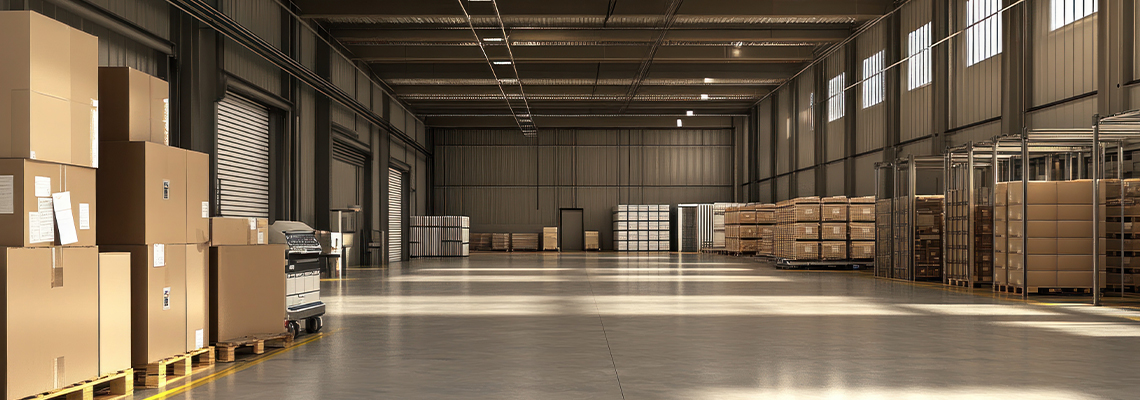 10 Oct 2024
10 Oct 2024
Warehousing in 2024: Exploring New Trends in Efficiency, Technology, and Sustainability
As we enter 2024, warehouses are changing quickly. Businesses use new technologies like robots and smart computers to work better and faster. Customers now want their orders sooner and just for them, so warehouses streamline their work. Taking care of the Earth also matters, so companies use green lights, cut down on trash, and choose materials from nature to help the planet. The world market is tough, so warehouses in Singapore create strong and flexible plans to handle problems and serve different countries. So, let’s look at the significant changes shaping warehouses in 2024.
Top 7 Trends of Warehousing in 2024
1. Automation
Machines are taking over many jobs in warehouses. Robots zoom through the aisles, picking up and packing items faster than people. Robots use sensors and cameras to help them do these jobs quickly and safely.
Businesses buy and use more robots yearly to keep up with fast online shopping. Automation helps them speed up and manage warehouse space better. Even big warehouses depend on these robots to move products efficiently.
2. Stock Merging
In 2024, more companies will combine their store and online products into one big group. This helps them fill both in-store and online orders without mixing things up. It also keeps products safe and easy to find.
Stock merging also means companies won’t make too many products or buy too much stuff. Ultimately, they save money and help the planet by using fewer resources.
3. Sustainability
Taking care of the planet has become super important for warehouses in 2024. Companies add solar panels and use LED lights to save energy. In addition, they pack items with less waste, and some even use reusable boxes.
Warehouses are shrinking their waste piles and recycling everything they can. They focus on greener warehouse space. For example, a warehouse might run on solar energy or have smart lighting to save power.
4. AI and Machine Learning
Artificial Intelligence (AI) and Machine Learning (ML) are changing how warehouses think and act. AI can help them know what customers want before they ask. Robots powered by AI can now do tough jobs like packing, sorting, and picking products.
AI helps warehouses move things around faster and smarter. They can make better choices about where to put items or how to store them. Therefore, companies use AI to run smoother and deliver products quicker.
5. Warehouse Management Software
Special software called Warehouse Management Systems (WMS) helps warehouses work better. These systems track where products are, how many they have, and when they need to order more. They help prevent mistakes and speed things up.
WMS also helps warehouses use their space wisely. The software checks for empty spots and determines how to store more items in less space. Moreover, it’s like a brain that runs the warehouse, helping both big and small companies keep up.
6. Restoring and Customising
Many old warehouses get makeovers, changing them for today’s jobs. These changes add new tools and cool designs so warehouses can send, store, and bring goods better. Upgraded warehouses use robots, better heating and cooling, and strong locks to meet today’s busy needs. Customisation grows, too. Warehouses now build particular areas for different businesses, like medicine or car parts.
For instance, a medicine section keeps things cold and counts items carefully to stay safe. Car parts areas use strong shelves and easy access for oversized items. Each product remains in the best place, keeping things neat and organised.
Also, customised warehouses make work smoother by organising tasks. With their own spaces, workers find and handle items easily, spend less time looking for things, and make fewer mistakes. Thus, this neatness speeds up deliveries and ensures everything is correct, helping businesses quickly give customers what they need.
7. Internet of Things (IoT) and Real-Time Tracking
Tiny sensors in warehouses now gather lots of information. Additionally, these IoT devices can keep track of products, machines, and how things are running in real time.
When products move, the sensors tell the system where they go. This helps companies know exactly where their stuff is and when it will arrive. Customers love this because it shows them exactly when their package will be delivered.
IoT also makes warehouses safer. The sensors tell workers if something isn’t working or if there’s a problem. Consequently, this keeps everyone safe and prevents accidents.
The End Note
In 2024, Warehouses will run faster, smarter, and greener. Robots, AI, and smart sensors help warehouses work better. Businesses focus on saving the planet while getting products to customers faster than ever.
No matter the warehouse size, whether in an ample warehouse space or a small company area in Singapore, these trends are shaping the future of warehousing and logistics. Companies that jump into these changes will lead to a brighter, more efficient future. However, using new ideas helps businesses stay strong and meet the market’s changing needs.
